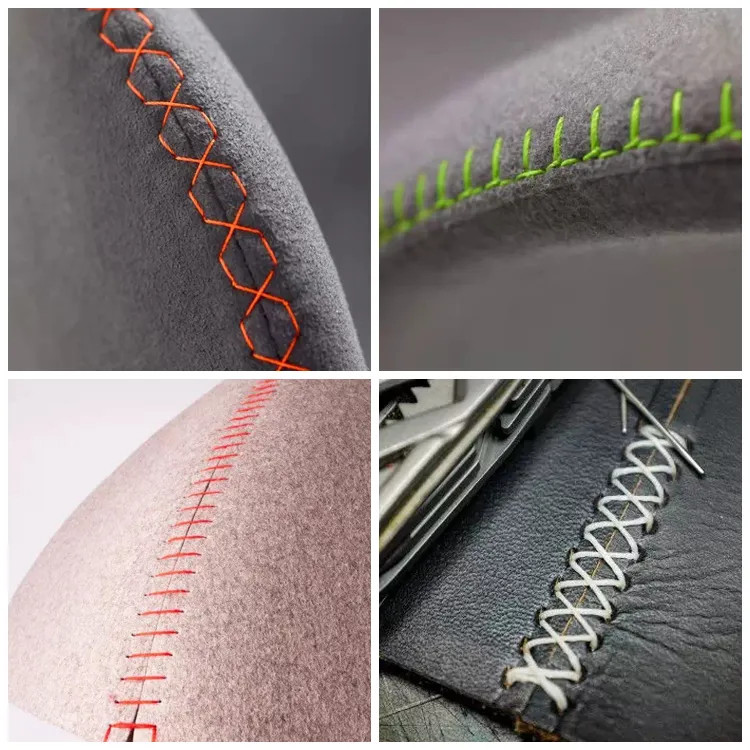Is it possible to use a twin needle on every type of sewing machine?
Can You Use a Twin Needle on Any Sewing Machine?
Sewing enthusiasts often seek ways to enhance their projects, and one of the most effective tools for this purpose is a twin needle. This unique needle allows you to sew two parallel lines simultaneously, which can add a professional finish to hems, decorative stitches, and more. However, if you're considering using a twin needle, a common question arises can you use a twin needle on any sewing machine?
Understanding Twin Needles
A twin needle consists of two needle shafts that are joined at the top but separate at the bottom, each with its own eye for threading. This design enables the sewing machine to create two lines of stitching in a single pass, which can be particularly useful when working with knit fabrics or when adding decorative elements to your projects. Twin needles come in various sizes and widths, allowing for a range of effects and applications.
Compatibility with Sewing Machines
While twin needles are a fantastic addition to any sewing toolkit, they are not universally compatible with all sewing machines
. Here are some points to consider1. Sewing Machine Type Most modern sewing machines, especially those designed for home use, support twin needles. However, if you are using an older or more basic model, it’s vital to check the manufacturer’s guidelines to determine whether twin needles can be used. Machines designed specifically for quilting or specialized tasks may also vary in compatibility.
can you use a twin needle on any sewing machine

2. Presser Foot Each sewing machine typically comes with a designated presser foot for general use, and in some cases, you may need a specific foot to accommodate the wider width of a twin needle. Ensure that your presser foot allows enough space for the two needle shafts to operate freely without causing damage or misalignment.
3. Stitch Selection Depending on your sewing machine, some stitches may not be compatible with a twin needle. It’s advisable to consult your sewing machine manual or perform a test stitch with your desired pattern. Many sewing machines have a dedicated setting or stitch indicating compatibility with twin needles, often marked on the machine itself.
4. Threading Using a twin needle requires proper threading methods. Typically, one thread is threaded through each needle, which may necessitate adjusting the tension settings on your sewing machine. Some machines have specific instructions for twin needle setup, so be sure to consult your manual for guidance.
5. Fabric Considerations Twin needles work exceptionally well with knit and stretchy fabrics, as they allow for elasticity in the seams. However, be cautious when using them with heavier fabrics, as it may lead to skipped stitches or damage to the fabric or the machine itself.
Conclusion
In summary, while you can use a twin needle on many sewing machines, it is essential to verify compatibility with your specific model. Factors such as the type of machine, presser foot compatibility, stitch selection, proper threading, and suitable fabric should all be taken into consideration. By doing your research and understanding the capabilities of your sewing machine, you can effectively utilize a twin needle to enhance your sewing projects and achieve beautifully finished edges and decorations. Happy sewing!
-
Industrial Cylinder Arm Sewing Machine: Revolutionizing Heavy-Duty SewingNewsJul.28,2025
-
Cylinder Arm Sewing Machine: Perfect for Special Sewing ApplicationsNewsJul.28,2025
-
Cylinder Bed Sewing Machine: Essential for Sewing Complex MaterialsNewsJul.28,2025
-
Heavy Duty Sewing Machine: The Essential Tool for Industrial ApplicationsNewsJul.28,2025
-
Computerized Pattern Sewing Machine: Revolutionizing Precision StitchingNewsJul.28,2025
-
Heavy Duty Industrial Sewing Machine: Power Meets PrecisionNewsJul.28,2025
-
Leather Sewing Machine: The Industrial Standard for Tough MaterialsNewsJul.18,2025





























